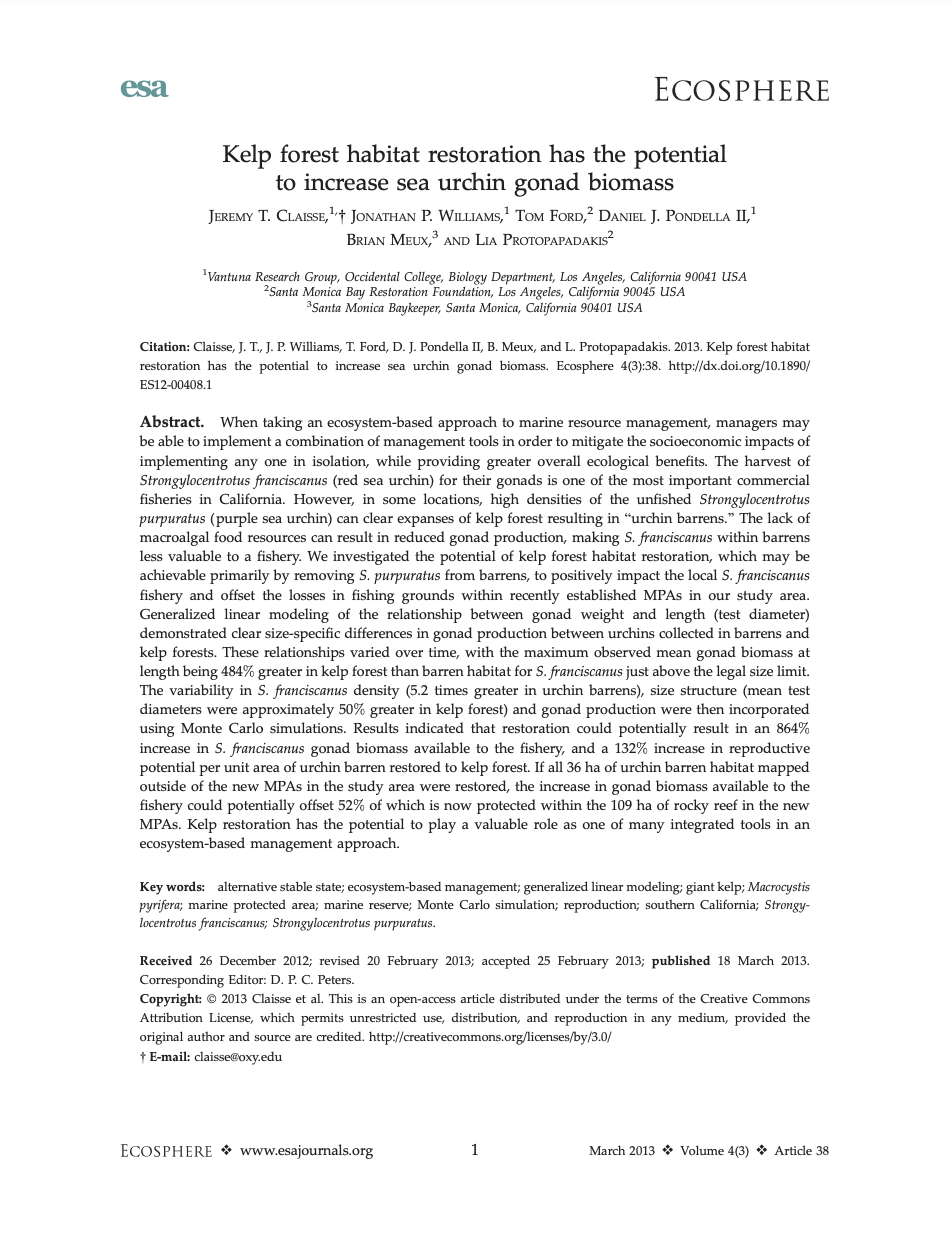(Abstract) When taking an ecosystem-based approach to marine resource management, managers may be able to implement a combination of management tools in order to mitigate the socioeconomic impacts of implementing any one in isolation, while providing greater overall ecological benefits. The harvest of Strongylocentrotus franciscanus (red sea urchin) for their gonads is one of the most important commercial fisheries in California. However, in some locations, high densities of the unfished Strongylocentrotus purpuratus (purple sea urchin) can clear expanses of kelp forest resulting in ‘‘urchin barrens.’’ The lack of macroalgal food resources can result in reduced gonad production, making S. franciscanus within barrens less valuable to a fishery. We investigated the potential of kelp forest habitat restoration, which may be achievable primarily by removing S. purpuratus from barrens, to positively impact the local S. franciscanus fishery and offset the losses in fishing grounds within recently established MPAs in our study area. Generalized linear modeling of the relationship between gonad weight and length (test diameter) demonstrated clear size-specific differences in gonad production between urchins collected in barrens and kelp forests. These relationships varied over time, with the maximum observed mean gonad biomass at length being 484% greater in kelp forest than barren habitat for S. franciscanus just above the legal size limit. The variability in S. franciscanus density (5.2 times greater in urchin barrens), size structure (mean test diameters were approximately 50% greater in kelp forest) and gonad production were then incorporated using Monte Carlo simulations. Results indicated that restoration could potentially result in an 864% increase in S. franciscanus gonad biomass available to the fishery, and a 132% increase in reproductive potential per unit area of urchin barren restored to kelp forest. If all 36 ha of urchin barren habitat mapped outside of the new MPAs in the study area were restored, the increase in gonad biomass available to the fishery could potentially offset 52% of which is now protected within the 109 ha of rocky reef in the new MPAs. Kelp restoration has the potential to play a valuable role as one of many integrated tools in an ecosystem-based management approach.
Kelp Forest Habitat Restoration Has The Potential To Increase Sea Urchin Gonad Biomass
